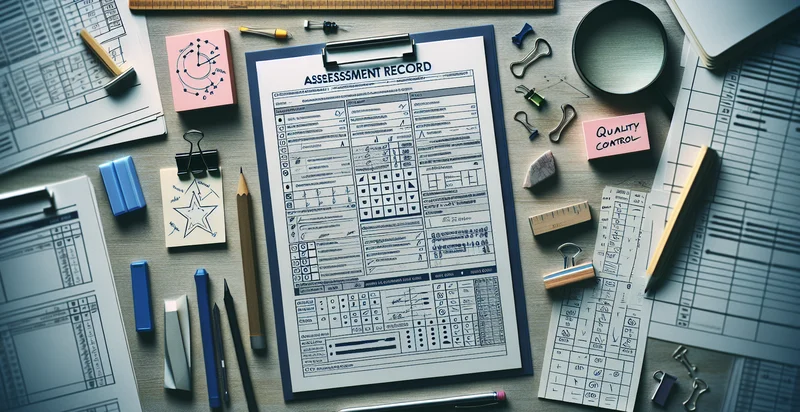Identify assessment record quality
using AI
Below is a free classifier to identify assessment record quality. Just upload your image, and our AI will predict the quality of assessment records across multiple categories. - in just seconds.

Contact us for API access
Or, use Nyckel to build highly-accurate custom classifiers in just minutes. No PhD required.
Get started
import nyckel
credentials = nyckel.Credentials("YOUR_CLIENT_ID", "YOUR_CLIENT_SECRET")
nyckel.invoke("assessment-record-quality", "your_image_url", credentials)
fetch('https://www.nyckel.com/v1/functions/assessment-record-quality/invoke', {
method: 'POST',
headers: {
'Authorization': 'Bearer ' + 'YOUR_BEARER_TOKEN',
'Content-Type': 'application/json',
},
body: JSON.stringify(
{"data": "your_image_url"}
)
})
.then(response => response.json())
.then(data => console.log(data));
curl -X POST \
-H "Content-Type: application/json" \
-H "Authorization: Bearer YOUR_BEARER_TOKEN" \
-d '{"data": "your_image_url"}' \
https://www.nyckel.com/v1/functions/assessment-record-quality/invoke
How this classifier works
To start, upload your image. Our AI tool will then predict the quality of assessment records across multiple categories..
This pretrained image model uses a Nyckel-created dataset and has 21 labels, including Acceptable, Acceptable Quality, Adequate, Deficient, Excellent, Fair, Good, High Quality, Inadequate and Low Quality.
We'll also show a confidence score (the higher the number, the more confident the AI model is around the quality of assessment records across multiple categories.).
Whether you're just curious or building assessment record quality detection into your application, we hope our classifier proves helpful.
Related Classifiers
Need to identify assessment record quality at scale?
Get API or Zapier access to this classifier for free. It's perfect for:
- Quality Assurance in Medical Imaging: The False Image Classification function can be employed to assess the quality of medical images before they are used for diagnosis. By identifying images that may be misclassified or poorly captured, healthcare providers can ensure that only reliable images are used, improving patient outcomes.
- Automotive Safety Features Testing: In the automotive industry, this function can evaluate images captured by safety test vehicles to ensure that systems like collision detection are accurately interpreting their environment. By flagging images with potential false classifications, engineers can refine algorithms and enhance vehicle safety features.
- Content Moderation for Social Media: This function can help social media platforms identify potentially harmful or inappropriate images rapidly. By assessing the quality of images flagged by users, platforms can improve the accuracy of their content moderation systems and reduce the incidence of false positives.
- Advertising and Brand Management: Brands can use this function to assess the quality of visual content shared across social media. By ensuring that images consistently align with brand guidelines and values, businesses can maintain their brand integrity and improve consumer trust.
- Fraud Detection in E-commerce: E-commerce platforms can employ this function to evaluate user-uploaded images for listings, ensuring that the products are accurately represented. By detecting false or misleading images, businesses can reduce fraud incidents and enhance customer satisfaction.
- Quality Control in Manufacturing: Within manufacturing settings, this function can assess images captured during quality control inspections. By identifying images that may have been misclassified due to poor quality, manufacturers can ensure that only products meeting standards are shipped to customers.
- Educational Assessment Tools: Educational institutions can utilize this function to evaluate images submitted by students for assignments or projects. By ensuring that submitted visuals meet quality standards and are accurately categorized, schools can maintain academic integrity and improve educational outcomes.


